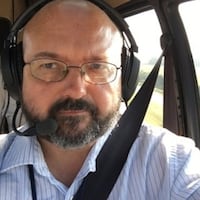Wright-Patterson hosted what were then called the “Proximity Peace Talks,” where 2,000 Air Force members and civilian employees worked together to help halt a war, which by November 1995 had waged for 43 months, taking some 200,000 lives.
With only 13 days to prepare for negotiations, Air Force civil engineers raised 4,000 feet of fencing in four days, built 12 executive suites in visiting officers quarters and created a “base within a base” to accommodate diplomats and heads of state.
They provided 350 telephones, 20 fax machines, 14 copiers and — no small feat in 1995 — 35 cell phones and 50 computers.
U.S. Rep. Mike Turner, a former president of the NATO Parliamentary Assembly and now vice-chairman of its Defense and Security Committee, said memorializing the peace talks was a highlight of the weekend.
Today in southeastern Europe, “Dayton” remains a byword for a fragile but enduring peace.
Turner told about 50 assembled delegates at the Hope that they do honor to the achievement of the talks and to the tasks ahead.
“We will leave here with a renewed obligation and understanding of how we fight authoritarianism, how we fight corruption, how we pull together, how we build democratic institutions and how we support democratic institutions,” said the Dayton Republican, who was mayor of Dayton in 1995.
Besides representatives of the nations directly involved in the talks, officials from Albania, Kosovo, Montenegro and North Macedonia were also on hand.
The delegates planned a visit to the National Museum of the U.S. Air Force later Sunday evening, where a symphony from Sarajevo was scheduled to perform. Law enforcement blocked access to the museum on Springfield Street and from Wright Brothers Parkway in Riverside Sunday afternoon.
Lt. Gen. Linda Hurry, vice commander of Air Force Materiel Command (AFMC), which is headquartered at Wright-Patterson a stone’s throw from the Hope, called the talks “one of the most consequential moments in history.”
“Our installation and our city stepped up to create an environment for compromise and the hope of peace,” Hurry said, adding later that former President Bill Clinton “had a vision for peace, and Wright-Patterson Air Force Base helped bring that to life.”
AFMC historian Ray Ortensie recalled how a dozen pages of guidelines from the U.S. State Department for the talks quickly become 50 pages.
“We defined 24-7,” retired Col. Robbie Robinson, then commander of the 88th Air Base Wing, told the Dayton Daily News Sunday.
The 88th Civil Engineer Group’s deputy director, Tom Shoup, later estimated that the base in less than two weeks created infrastructure that ordinarily would have taken 60 days to build, according to an AFMC retrospective of the events.
About the Author

